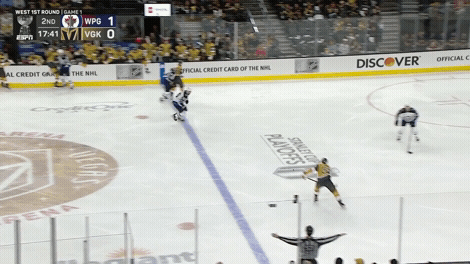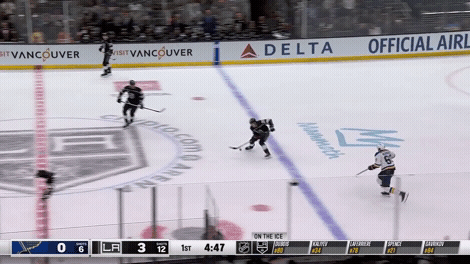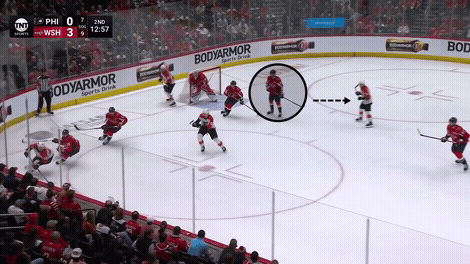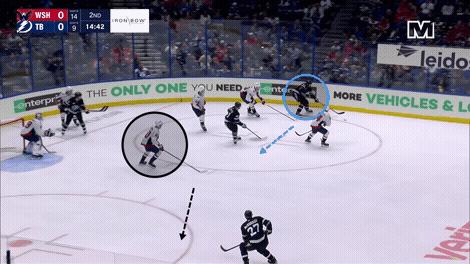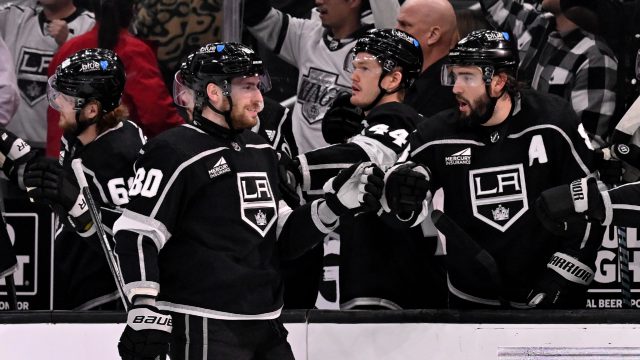Analyzing how Pierre-Luc Dubois is fitting in with the Capitals
On to his fourth NHL team, how is Pierre-Luc Dubois settling in with the Washington Capitals after eight games? Scout Jason Bukala looks at Dubois strengths, weaknesses and assesses the early returns.
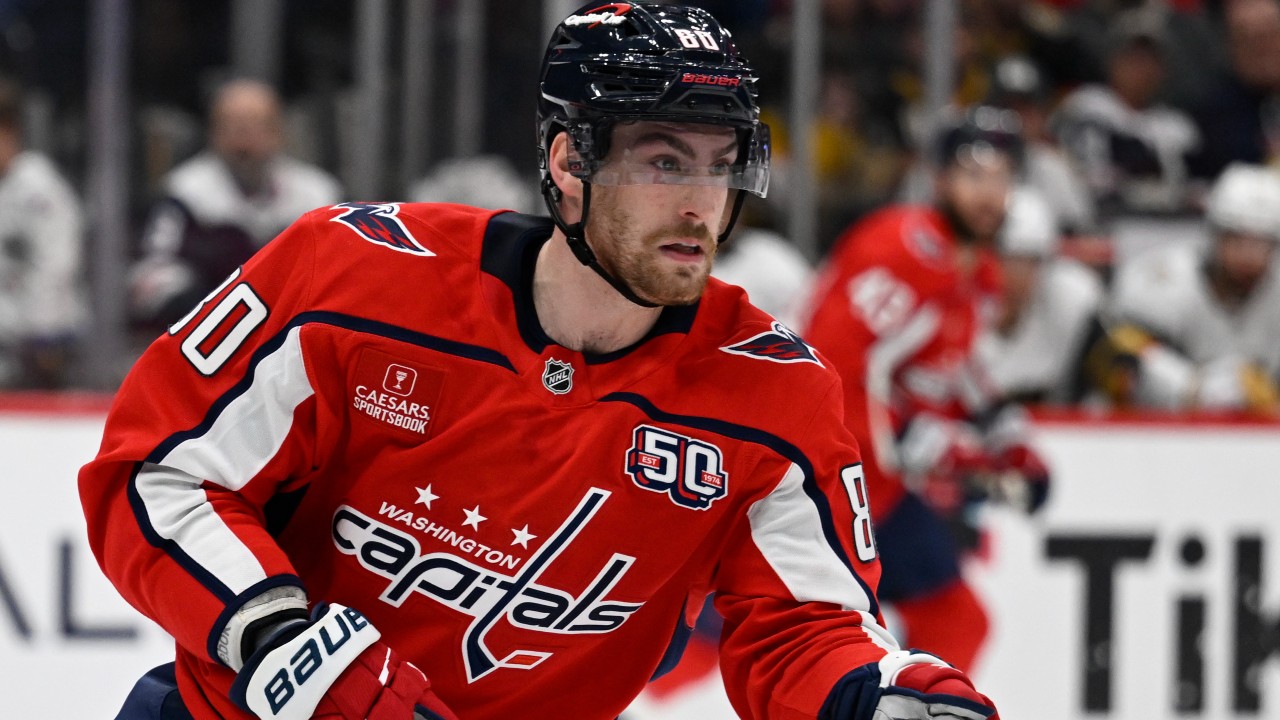
On Jan. 23, 2021, the Winnipeg Jets traded Patrik Laine and Jack Roslovic to the Columbus Blue Jackets. In return, the Jets received centre Pierre-Luc Dubois and a third-round draft pick (Danil Zhilkin).
Looking back, it’s a transaction that’s loaded with irony. Both sides thought they were acquiring game-changers — Winnipeg thought it was getting a top centre after Dubois’ point-per-game showing in the 2020 bubble playoffs, Columbus was excited to have perhaps one of the top goal scorers in the league. Neither result turned out, however, and today Laine is a member of the Montreal Canadiens, while Dubois has been traded two additional times and is playing for the Washington Capitals this season.
The Canadiens and Capitals meet Thursday night, and with Laine on the shelf recovering from a knee injury, my attention is on Dubois and how he’s been doing with another fresh start.
I’m having a difficult time identifying a more polarizing NHL talent than Dubois. It feels like he’s been in the league forever, but he’s still only 26 years old. His best shifts profile a power forward who’s difficult to check, a 6-foot-4, 225-pound centre. He’s been on the cusp of scoring 30 goals three times in his career, the most recent just two years ago. Dubois has the potential to be an upper echelon player in the league, the kind of centre every team craves to have.
But, so far, he hasn’t consistently delivered on that potential and his last team, the Los Angeles Kings, bailed on his eight-year, $68 million contract 12 months after getting him in a sign-and-trade with the Jets, and just before a no-movement clause kicked in. They traded him to Washington for netminder Darcy Kuemper after giving up Gabe Vilardi, Rasmus Kupari, Alex Iafallo and Montreal’s 2024 second-round pick (Alfons Freij) to get Dubois in the first place.
With that in mind, I’ve set out to analyze Dubois’ first segment of games with the Capitals and identify if anything stands out – positive or negative – compared to his previous stops in Columbus, Winnipeg, and Los Angeles.
THE GOOD
The Washington Capitals took a significant risk acquiring Dubois. While his best shifts are all-star calibre, the in-between moments of malaise leave much to be desired.
Here’s a look at some of the good from the past couple seasons.
In the first clip, while Dubois was a member of the Jets, he scores off the rush in a playoff game versus the Vegas Golden Knights. Keeping in mind Dubois’ size, when he’s heading to the net like he is in this sequence, he’s like a train tracking downhill.
The second clip is from a game last year in Los Angeles when the Kings were hosting the St. Louis Blues. Dubois and Arthur Kaliyev work a nifty give-and-go across the top of the slot in the Blues’ end and Dubois rips the puck home from mid-range.
This season, Dubois has flashed that sort of positivity again, and we can see one of these examples in a recent game against the Philadelphia Flyers.
Dubois is in a responsible defensive position, reads the play as the Flyers turn the puck over and leads the transition rush for Washington. He drives the Flyers back off their blue line, surveys his options and makes a simple play to Trevor van Riemsdyk who directs the puck towards the net before it’s tipped by Connor McMichael.
The Capitals, as a team, have been very happy with the early returns from Dubois. Head coach Spencer Carbery recently stated he felt Dubois has been the Capitals’ best player to start the season. There might be some “coach speak” embedded in Carbery’s observation as he could be trying to make sure Dubois is in a good spot by outwardly supporting a player who is finding his way with another new team. Dubois is sixth in team scoring, in the bottom third in plus-minus (plus-1), fifth in hits (11) and eighth in shots on goal (17). To be fair, Dubois does lead Washington’s forwards with nine blocked shots.
There’s no doubting Dubois’ line has had a hot start. Connor McMichael (4G-5A) and Tom Wilson (5G-1A) have been fantastic for Washington. My question is: Does anything stand out about their metrics this year compared to last, and is it due to the fact Dubois is the centre of the line? Or are the three players essentially close to the same version of themselves?
Here’s what I found from NHL EDGE, which shows the percentile each is in for these stats, compared to their peers:
Connor McMichael
|
2023-24 |
Percentile |
|
SOG |
61st |
|
Offensive zone time |
Below 50 |
|
Shooting % |
78th |
|
2024-25 |
|
|
SOG |
78th |
|
Offensive zone time |
Below 50 |
|
Shooting % |
80th |
Tom Wilson
|
2023-24 |
Percentile |
|
SOG |
77th |
|
Offensive zone time |
Below 50 |
|
Shooting % |
58th |
|
2024-25 |
|
|
SOG |
65th |
|
Offensive zone time |
Below 50 |
|
Shooting % |
94th |
Pierre-Luc Dubois
|
2023-24 |
Percentile |
|
SOG |
65th |
|
Offensive zone time |
Below 50 |
|
Shooting % |
61st |
|
2024-25 |
|
|
SOG |
62nd |
|
Offensive zone time |
Below 50 |
|
Shooting % |
Below 50 |
What these numbers show is a trio of players that isn’t spending any notable amount more time in the offensive zone than they did last season, while both wingers have higher shooting percentages that are bound to level off to some degree. This is especially true for Wilson, who is scoring on 26.3 per cent of his shots, much higher than his career average of 12.1.
But the trio is getting more shots and scoring chances than they give up and, so far, have been Washington’s best line.
NOT SO GOOD
Dubois has made curious choices in all three zones over the span of his career. Suffice to say the following clip is what has driven coaches crazy over the years.
Dubois starts the sequence in a reliable position defensively and is actually directing traffic from the left of his crease. As the play moves across the zone, he has an opportunity to use his size and length to dislodge Tampa defenceman Ryan McDonagh off the puck. Instead, Dubois takes a short-cut and tries to poke check the puck off McDonagh. He’s not strong on his stick so he loses it, and then loses his focus in the sequence. Ultimately his check, Nick Paul, ends up firing the puck home from a high danger area. Dubois unfortunately didn’t have a chance to recover once he elected to pick up his stick.
SO, ARE WE SEEING PROGRESS?
The Capitals are banking on Dubois performing to the best of his ability on more nights than not. When they acquired him in trade this past summer the organization knew exactly what the risk and reward could be.
The bottom line remains the same when it comes to Dubois: He has an enormous amount of upside, but it comes with the risk of uneven effort on any given night. Through his first eight games Dubois is averaging 17:28 of ice time, has 11 hits, seven blocked shots and is winning just 47 per cent of his faceoffs. The goal he has scored was an empty-netter.
It’s too early to know what Dubois will provide the Capitals for the rest of this season and for several years to come. His start hasn’t been poor, so I’m cautiously optimistic he’s going to have a bounce back year and assist the Capitals with their playoff aspirations.
Time will tell. Let’s see what version of Dubois we get in Thursday night’s game against Montreal.


